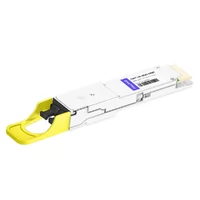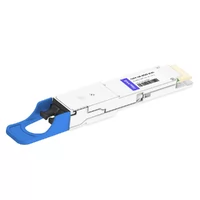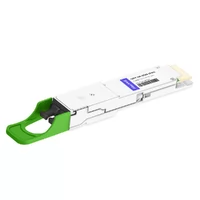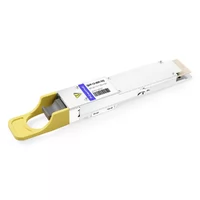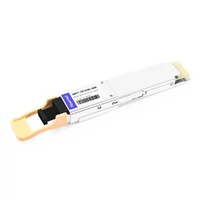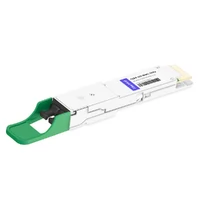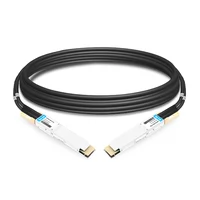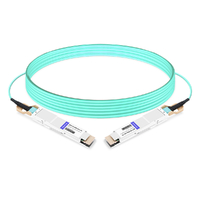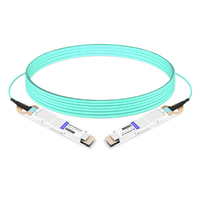Currently, the IO modules of SFP28/SFP56 and QSFP28/QSFP56 are mainly used for coupling between switches and switches, switches and servers in the mainstream market cabinets. In the era of the 56Gbps rate, in pursuit of higher port density, QSFP-DD IO modules have been further developed to achieve 400G port capacity. With the doubling of signal rate, the port capacity of the QSFP-DD module has been able to double up to 800G, which we call QSFP112, with 8 high-speed channels in its package, the transmission rate of a single channel can reach 112G PAM4, and the total transmission rate of the whole package is up to 800G. And it is backward compatible with QSFP56 while doubling the rate to meet the IEEE 802.3CK Association standard. This will inevitably lead to a dramatic increase in link loss, making the transmission distance of passive copper IO modules further reduced. Based on realistic physical constraints, the IEEE 802.3CK group that developed the 112G specification reduced the maximum length of the copper link to 2 meters based on a maximum of 3 meters of copper IO at 56G rates.
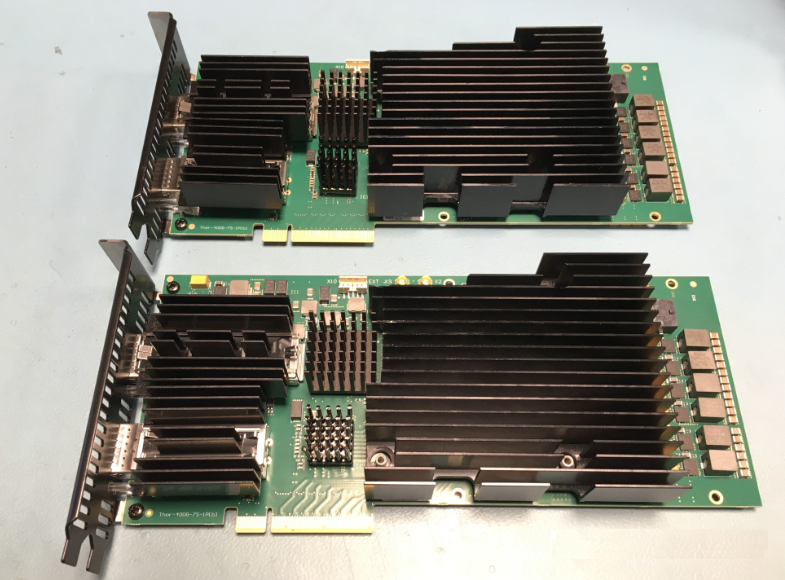
XENA NETWORKS Inserts First QSFP-DD x 2 Port 1.6Tbps Test Board
800G QSFP-DD is coming
Data center capacity is determined by servers, switches, and connectivity factors that interact and balance each other while driving each other toward faster and lower costs. For many years, switching technology has been the main driving force. With the recent conclusion of OFC 2022, mainstream optical communication manufacturers such as Intel, Finisar, FiberMall, and others have shown 800G series optical modules. At the same time, optical chip companies showed high-end products for 800G, and traditional solutions may still have a place in the 800G era. FiberMall believes that 800G optical module technology is becoming more and more clear, and 800G DR8 and 2*FR4 have great potential to become mainstream. As OFC 2022 mainstream optical module and optical chip companies have successively launched new products, the time node and mainstream technology route of the 800G upgrade have been defined. The data center optical module industry rate continues to iterate, and the long-term growth attribute is determined. We believe that in the era of digital intelligence, the continuous explosion of data center traffic brings the demand for constant iteration of optical modules, and the clear technical route of 800G indicates that 400G is about to be scaled up.
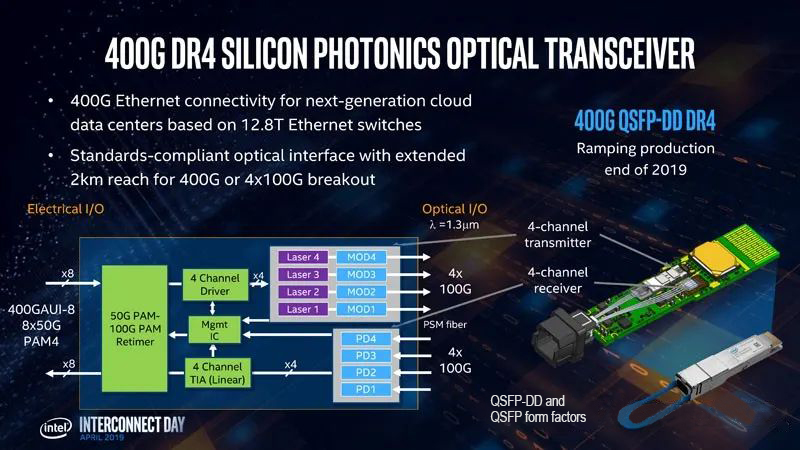
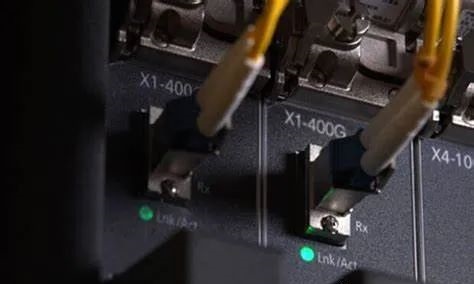
When the 25Gbps signal rate was upgraded to today’s 56Gbps signal rate, due to the introduction of the PAM4 (Pulse Amplitude Modulation) signal standard (IEEE 802.3BS group), the base frequency point of the signal transmitted on the Ethernet Serdes link was simply shifted up from 12.89GHz to 13.28GHz, and the signal The change in the base frequency point is not significant and is able to support a system with good transmission of 25Gbps signals. After a slight optimization, it can be upgraded to a 56Gbps signal rate very smoothly. However, it is not so easy to upgrade from a 56Gbps signal rate to a 112Gbps signal rate.
The PAM4 signaling standard introduced during the development of the 56Gbps standard will most likely continue to be reused at the 112Gbps rate. This makes the base frequency point of the 112Gbps Ethernet signal 26.56GHz, which is double the base frequency point of the 56Gbps signal rate. In this generation of 112Gbps rate, cable technology requirements will usher in a more demanding test. At present, 400Gbps connection products supporting high-speed cable, are early to do more mature mainly foreign brands, such as TE, LEONI, MOLEX, Amphenol, etc.
FiberMall has done a lot of innovation in the past few years in the manufacturing process, equipment, and materials. But the existing technical difficulties are still mainly in the bare wire part. DAC copper cable will usher in a period of rapid development.
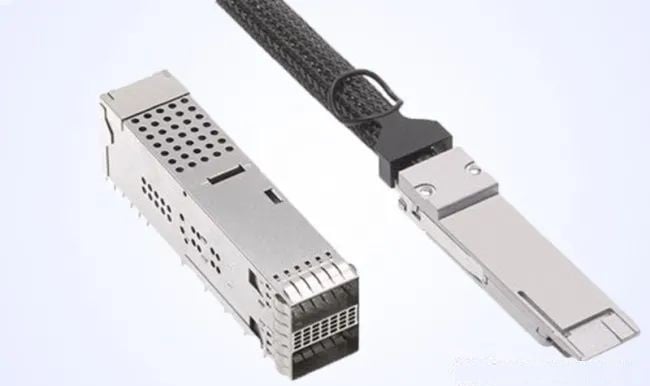
The market is changing rapidly and will evolve even faster in the future. The good news is that promising and significant progress has been made, from standards bodies to industry, that promises to fuel data center upgrades to 400G and 800G. But technical hurdles aren’t the only difficulties to overcome; another challenge is the timing. Every two to three years is a refresh cycle, and new technologies are coming out at an accelerated pace. It is difficult for operators to accurately determine the right time to transition, and if a miscalculation occurs, the cost will be higher.
The mainstream of existing data centers is 100G. 25% of deployed 100G data centers are copper, 50% are multi-mode fiber, and 25% are single-module fiber. These provisional numbers are not very exact, and as the demand for bandwidth, capacity, and lower latency continue to grow, it is driving the migration to faster network speeds. So every year is a test for the resilience and viability of large-scale cloud data centers. Currently, 100G is flooding the market and 400G is expected to arrive next year. despite this, data traffic continues to increase and the pressure on data centers will continue unabated. After 400G, 800G QSFP-DD is already on the horizon.
Related Products:
-
 QSFP-DD-800G-DR8D QSFP-DD 8x100G DR PAM4 1310nm 500m DOM Dual MPO-12 SMF Optical Transceiver Module
$1250.00
QSFP-DD-800G-DR8D QSFP-DD 8x100G DR PAM4 1310nm 500m DOM Dual MPO-12 SMF Optical Transceiver Module
$1250.00
-
 QSFP-DD-800G-2LR4 QSFP-DD 2x400G LR4 PAM4 CWDM4 10km Dual CS SMF FEC Optical Transceiver Module
$2100.00
QSFP-DD-800G-2LR4 QSFP-DD 2x400G LR4 PAM4 CWDM4 10km Dual CS SMF FEC Optical Transceiver Module
$2100.00
-
 QSFP-DD-800G-2FR4L QSFP-DD 2x400G FR4 PAM4 CWDM4 2km DOM Dual duplex LC SMF Optical Transceiver Module
$1800.00
QSFP-DD-800G-2FR4L QSFP-DD 2x400G FR4 PAM4 CWDM4 2km DOM Dual duplex LC SMF Optical Transceiver Module
$1800.00
-
 QSFP-DD-800G-DR8 800G-DR8 QSFP-DD PAM4 1310nm 500m DOM MTP/MPO-16 SMF Optical Transceiver Module
$1300.00
QSFP-DD-800G-DR8 800G-DR8 QSFP-DD PAM4 1310nm 500m DOM MTP/MPO-16 SMF Optical Transceiver Module
$1300.00
-
 QSFP-DD-800G-SR8 800G SR8 QSFP-DD 850nm 100m OM4 MMF MPO-16 Optical Transceiver Module
$850.00
QSFP-DD-800G-SR8 800G SR8 QSFP-DD 850nm 100m OM4 MMF MPO-16 Optical Transceiver Module
$850.00
-
 QSFP-DD-800G-2FR4 800G QSFP-DD 2FR4 PAM4 1310nm 2km DOM Dual CS SMF Optical Transceiver Module
$1900.00
QSFP-DD-800G-2FR4 800G QSFP-DD 2FR4 PAM4 1310nm 2km DOM Dual CS SMF Optical Transceiver Module
$1900.00
-
 QSFP-DD-800G-FR8D QSFP-DD 8x100G FR/DR8+ PAM4 1310nm 2km DOM Dual MPO-12 SMF Optical Transceiver Module
$1450.00
QSFP-DD-800G-FR8D QSFP-DD 8x100G FR/DR8+ PAM4 1310nm 2km DOM Dual MPO-12 SMF Optical Transceiver Module
$1450.00
-
 Arista C-D800-D800-2M Compatible 2m (7ft) 800G QSFP-DD to QSFP-DD QSFP-DD800 PAM4 Passive Direct Attach Cable
$300.00
Arista C-D800-D800-2M Compatible 2m (7ft) 800G QSFP-DD to QSFP-DD QSFP-DD800 PAM4 Passive Direct Attach Cable
$300.00
-
 QSFP-DD-800G-AOC-7M 7m (23ft) 800G QSFP-DD to QSFP-DD Active Optical Cable
$2740.00
QSFP-DD-800G-AOC-7M 7m (23ft) 800G QSFP-DD to QSFP-DD Active Optical Cable
$2740.00
-
 QSFP-DD-800G-AOC-3M 3m (10ft) 800G QSFP-DD to QSFP-DD Active Optical Cable
$2710.00
QSFP-DD-800G-AOC-3M 3m (10ft) 800G QSFP-DD to QSFP-DD Active Optical Cable
$2710.00

